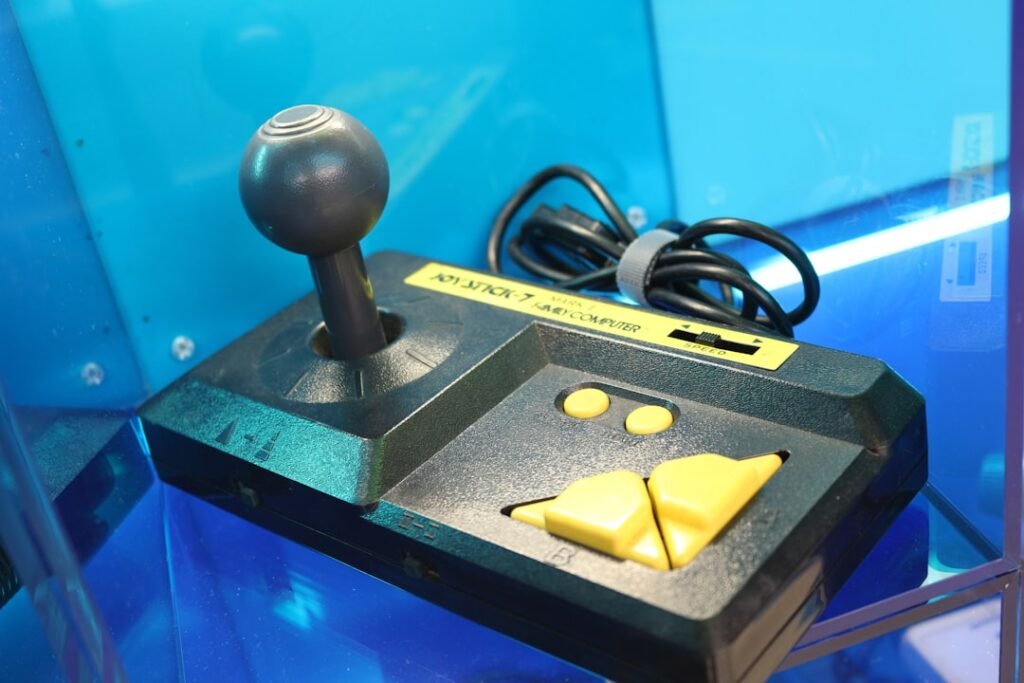Now Reading: The Ultimate Guide to In-Game Economy and Trading Strategies
-
01
The Ultimate Guide to In-Game Economy and Trading Strategies
The Ultimate Guide to In-Game Economy and Trading Strategies

As I delve into the world of gaming, one of the most fascinating aspects I encounter is the in-game economy. This intricate system operates much like a real-world economy, with its own set of rules, currencies, and market dynamics. Understanding this economy is crucial for any player who wishes to thrive and maximize their resources.
Each game has its unique currency, whether it be gold coins, gems, or other forms of virtual currency. These currencies can often be earned through gameplay, quests, or trading with other players. However, the value of these currencies can fluctuate based on supply and demand, making it essential for me to stay informed about market trends.
Moreover, the in-game economy is influenced by various factors, including player behavior, game updates, and seasonal events. For instance, when a new expansion is released, the influx of new items and resources can drastically alter the market landscape. I find it fascinating how certain items can skyrocket in value overnight due to changes in gameplay mechanics or the introduction of new content.
By keeping a close eye on these shifts, I can make informed decisions about when to buy or sell my assets, ensuring that I remain competitive within the game.
Key Takeaways
- Understanding the in-game economy is crucial for success in trading and auction houses.
- Mastering the art of trading involves studying market trends and understanding supply and demand.
- Utilizing auction houses and marketplaces can help players reach a wider audience for their items.
- Identifying valuable items and resources requires research and knowledge of the game’s economy.
- Developing effective pricing strategies is essential for maximizing profits and attracting buyers.
Mastering the Art of Trading
Building Trust and Relationships
To master this art, I have learned to communicate effectively and build relationships within the gaming community. Establishing trust is paramount; when I trade with someone, I want them to feel confident that they are getting a fair deal. This often involves negotiating terms that benefit both parties, which can lead to repeat transactions and a solid reputation.
The Importance of Timing
Additionally, I have discovered that timing plays a critical role in successful trading. There are moments when certain items are in high demand, and I can capitalize on this by offering them at a premium price. Conversely, there are times when I need to be patient and wait for the right opportunity to sell my less valuable items.
Navigating the Trading Landscape
By honing my instincts and being aware of market fluctuations, I can navigate the trading landscape with greater ease and efficiency.
Utilizing Auction Houses and Marketplaces

Auction houses and marketplaces are vital components of many games’ economies, and I have learned to leverage these platforms to my advantage. These venues provide a structured environment for buying and selling items, allowing me to reach a broader audience than I could through direct trades alone. When I first started using auction houses, I was overwhelmed by the sheer volume of listings and the competitive nature of bidding wars.
However, with practice, I have developed strategies that help me stand out from the crowd. One of my key strategies involves researching current market prices before listing my items. By understanding what similar items are selling for, I can set competitive prices that attract buyers while still ensuring a profit for myself.
Additionally, I pay attention to the timing of my listings; posting items during peak hours when more players are online increases my chances of making a sale. The auction house has become a powerful tool in my arsenal, enabling me to turn surplus items into valuable currency.
Identifying Valuable Items and Resources
In my quest to build wealth within the game, identifying valuable items and resources has become a crucial skill. Not all items hold equal worth; some may seem common but can be highly sought after due to their rarity or utility in gameplay. I have learned to recognize patterns in what players desire—certain crafting materials or rare weapons often command high prices due to their scarcity or effectiveness in combat.
By keeping an eye on community forums and discussions, I can stay ahead of trends and make informed decisions about what to collect or invest in. Moreover, I have found that some items may gain value over time as they become harder to obtain or as new content is released. For example, limited-edition items from past events can become coveted collectibles that players are willing to pay a premium for.
By maintaining a diverse inventory and being open to exploring different types of items, I can position myself as a knowledgeable trader who understands the nuances of the market.
Developing Effective Pricing Strategies
Pricing strategies are fundamental to my success in the in-game economy. Setting the right price for an item requires a delicate balance between attracting buyers and ensuring profitability. Initially, I made the mistake of undervaluing my items out of eagerness to sell quickly.
To develop effective pricing strategies, I now consider several factors: the item’s rarity, current demand, and my own urgency to sell. I also experiment with different pricing models, such as competitive pricing or value-based pricing.
Competitive pricing involves setting my prices based on what others are charging for similar items, while value-based pricing focuses on the perceived value of an item from the buyer’s perspective. By combining these approaches and adjusting my prices based on market feedback, I can optimize my sales and maximize my profits.
Building a Diversified Portfolio

Diversification: The Key to Success
As I navigate the complexities of the in-game economy, building a diversified portfolio has proven to be a wise strategy. Just like in real-world investing, having a variety of assets reduces risk and increases potential rewards. Instead of focusing solely on one type of item or resource, I have learned to spread my investments across different categories—crafting materials, weapons, armor sets, and collectibles.
Adapting to Changing Market Conditions
This diversification allows me to adapt to changing market conditions and capitalize on emerging trends.
If one category experiences a downturn in demand, I can rely on other assets to maintain my overall wealth.
A Fresh and Exciting Gaming Experience
This approach not only provides financial security but also keeps my gaming experience fresh and exciting as I explore different aspects of the game.
Leveraging Events and Limited-Time Offers
Events and limited-time offers present unique opportunities for me to enhance my in-game wealth. Many games host seasonal events that introduce exclusive items or bonuses for participating players. By actively engaging in these events, I can acquire rare items that may not be available at other times.
These limited-time offers often create a sense of urgency among players, driving up demand and prices for specific items. I have learned to plan ahead for these events by saving resources or currency that I can use strategically during these limited windows of opportunity. For instance, if I know an event is coming that will feature exclusive crafting materials or gear upgrades, I will stockpile currency beforehand so that I can make purchases quickly when the event launches.
This proactive approach allows me to take full advantage of these fleeting opportunities.
Avoiding Common Pitfalls and Scams
While navigating the in-game economy can be rewarding, it is not without its challenges and risks. One of the most significant pitfalls I have encountered is falling victim to scams or fraudulent trades. In an environment where anonymity is prevalent, it’s easy for unscrupulous players to take advantage of others.
To protect myself from scams, I have developed a set of guidelines that help me identify red flags during trades. For instance, if an offer seems too good to be true or if a player pressures me into making a quick decision without allowing time for consideration, I become wary. Additionally, I always verify item values through trusted sources before agreeing to any trades or purchases.
By remaining vigilant and cautious in my dealings with others, I can minimize my risk and ensure that my hard-earned resources are safeguarded against deceitful practices. In conclusion, mastering the intricacies of the in-game economy requires dedication and strategic thinking. From understanding market dynamics to developing effective trading strategies and avoiding scams, each aspect plays a vital role in achieving success within the game world.
As I continue my journey through various gaming landscapes, I remain committed to honing my skills and adapting to ever-changing environments—ensuring that I not only survive but thrive in this captivating digital realm.
If you’re interested in exploring the power of gaming as a community, you should check out the article “Level Up: The Power of Gaming Together”. This article delves into the importance of collaboration and teamwork in the gaming world, which can also be applied to in-game economy and trading strategies. By working together with other players, you can maximize your profits and achieve success in the virtual marketplace.
FAQs
What is in-game economy?
In-game economy refers to the system of virtual currency, resources, and trading within a video game. It involves the management and distribution of in-game assets and the interactions between players and the game’s economy.
What are trading strategies in a game’s economy?
Trading strategies in a game’s economy involve the buying, selling, and exchanging of virtual goods and currency within the game. Players may use various tactics such as market analysis, price speculation, and resource management to maximize their profits and assets.
What are some common in-game currencies?
Common in-game currencies include gold, coins, gems, credits, and other virtual currencies specific to each game. These currencies are used to purchase items, upgrades, and other in-game assets.
What are some popular trading tactics in in-game economies?
Popular trading tactics in in-game economies include arbitrage, speculation, crafting, and flipping. These tactics involve buying and selling items at different prices, predicting market trends, creating valuable items, and quickly reselling items for profit.
How does in-game economy impact gameplay?
In-game economy can impact gameplay by influencing the availability of resources, the pricing of items, and the overall progression within the game. A well-balanced in-game economy can enhance the gaming experience, while a poorly managed economy can lead to inflation, scarcity, and imbalance.




























Pingback: Defeat the Fiery Dragon: [Game] boss guide – how to beat Inferno Dragon